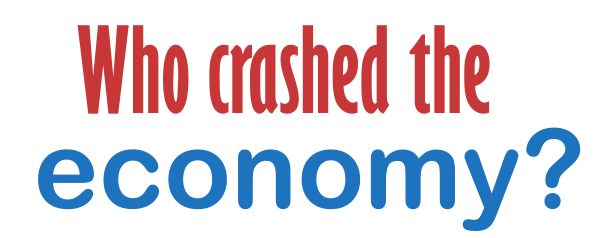Yesterday, the Australian Bureau of Statistics released stats indicating Australian retail trade fell 1 percent in June. This was a surprise to financial markets who expected a 0.1% rise instead.
The Sydney Morning Herald reported sensibly that
Retail sales have fallen in four of the first six months of calendar 2008, as consumers battle high interest rates, soaring fuel costs and heavy losses on share markets.
As well, the commercial banks have lifted their mortgage rates independently of decisions by the central bank, in a bid to recoup higher funding costs in wholesale money markets.
This Morning’s headline news in The Daily Telegraph was “RBA’s Retail Recession – Rate rises backfire as families cut spending“. It was plastered in bold across the front of the first page.
THE Reserve Bank is under unprecedented pressure to cut interest rates after figures released yesterday showed the economy is on the brink of recession. Unless rates are cut soon, we face the sharpest economic downturn in 16 years, experts warned.
The article went on to confidently say
IT’S official, the Reserve Bank has gone too far with its relentless run of interest rate rises, with economists now calling for urgent rate cuts to save the country from full-blown recession.
So there you have it – It’s now official it is the Reserve Bank’s fault! Never mind the fact that Australia and possibly the world is among the biggest housing bubble ever, fueled by cheap credit provided to speculative owners and investors who can’t afford it and then packaged into securities through credit derivatives and collateralized debt obligations and off sold to unsuspected institutions backed with excellent credit ratings. This rapid growth in house asset prices then fueled retail spending through the wealth effect and this retail spending fueled company profits and shareholder returns.
Maybe, just maybe it’s that wealth effect. Just as consumers feel wealthy and spend more when their assets are increasing in value, with recent big falls in share markets, super funds and with the housing market doing a U turn, maybe consumers have put the breaks on spending.
The last time I looked, the Reserve bank wasn’t in control of oil prices or international credit markets. Even if the RBA choose not to increase rates, the credit and housing bubbles which has been growing unsustainable since about 2002/03 would pop sooner or later. It was inevitable.
But none the less, there is now “unprecedented” pressure on the RBA to reverse their “relentless” run on interest rates. The real trouble now is a de-coupling of official interest rates and the cost of obtaining credit in the global market place. The credit purse strings are being tightened and just because the RBA *may* later in the year decide to reduce rates, doesn’t mean the banks cost to obtain credit becomes cheaper.
By 2003 the housing market was already at giddy heights. Yet the media continued to talk it up running countless front page articles around the country suggesting prices can only go one way and houses double in price every 7 to 10 years. In one such example, News Limited, via it’s Adelaide Sunday Mail published in February 2007 an article under the bold front page headline of “Future Shock : Welcome to our millionaire city”. Even though the article mentioned house prices had unsustainably increased 160%, yet at the same time wages had only increased 54%, it went on to make the predictions by simply applying the annual 8.7 per cent growth rate recorded by the Valuer General’s office in the past decade to the next ten years. Simple Ha?
If News Limited Journalist’s have anyone to blame for this recession, maybe they should look closer to home.
» Retail sales fall could see rate cut – The Sydney Morning Herald, 31st July 2008.
» Cut rates, or face recession News Limited, 1st August 2008.
